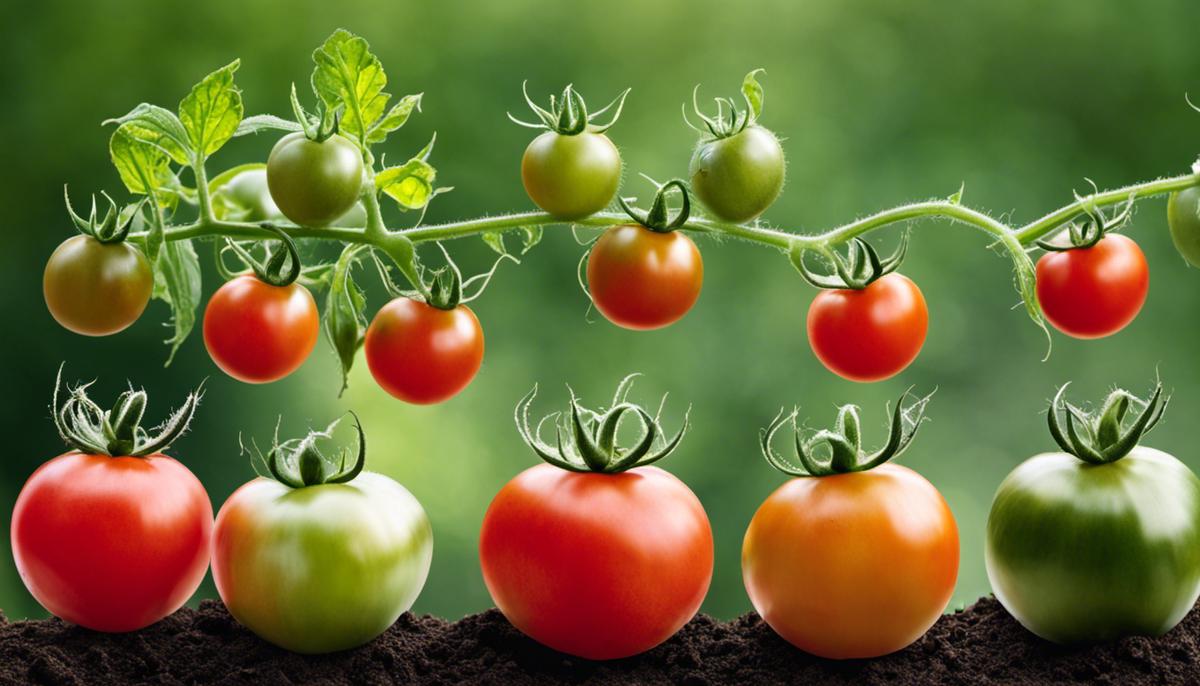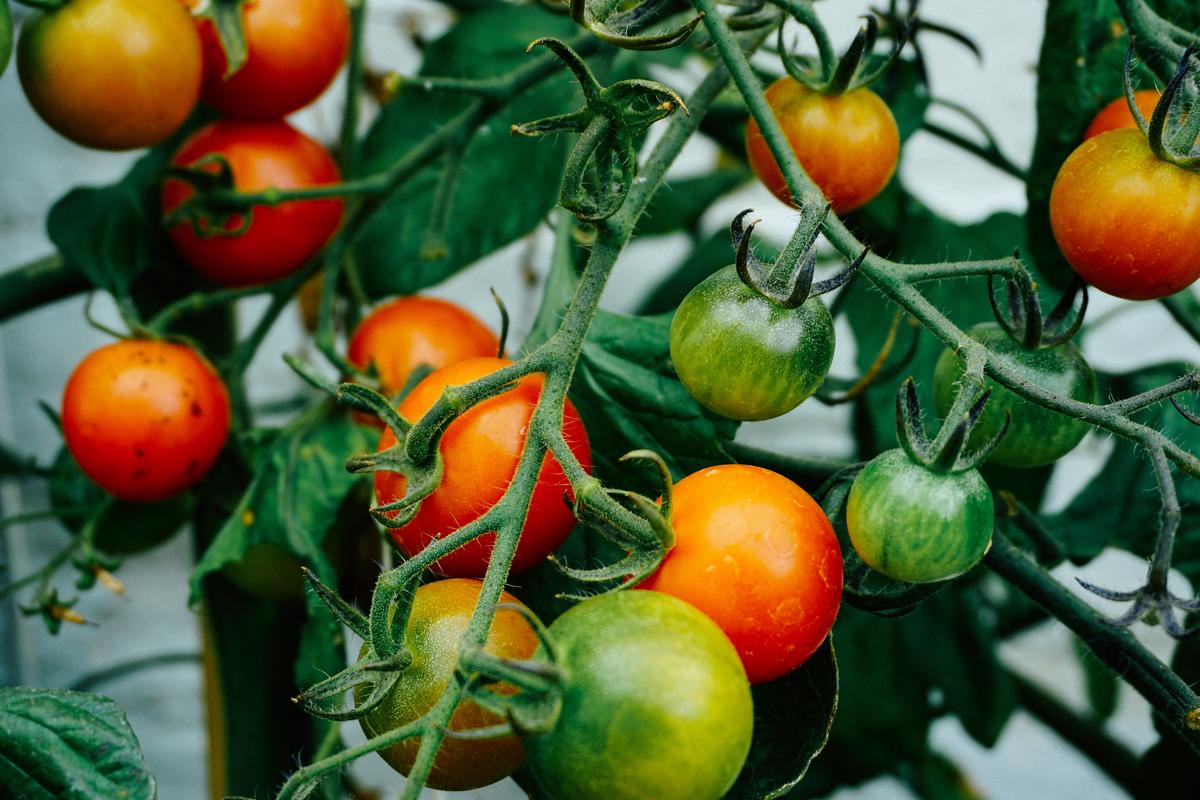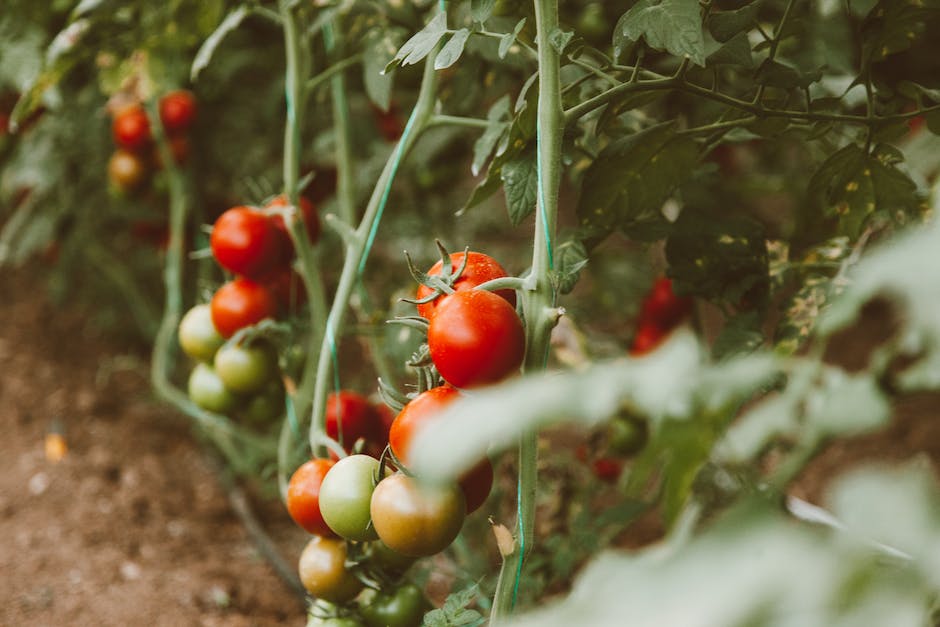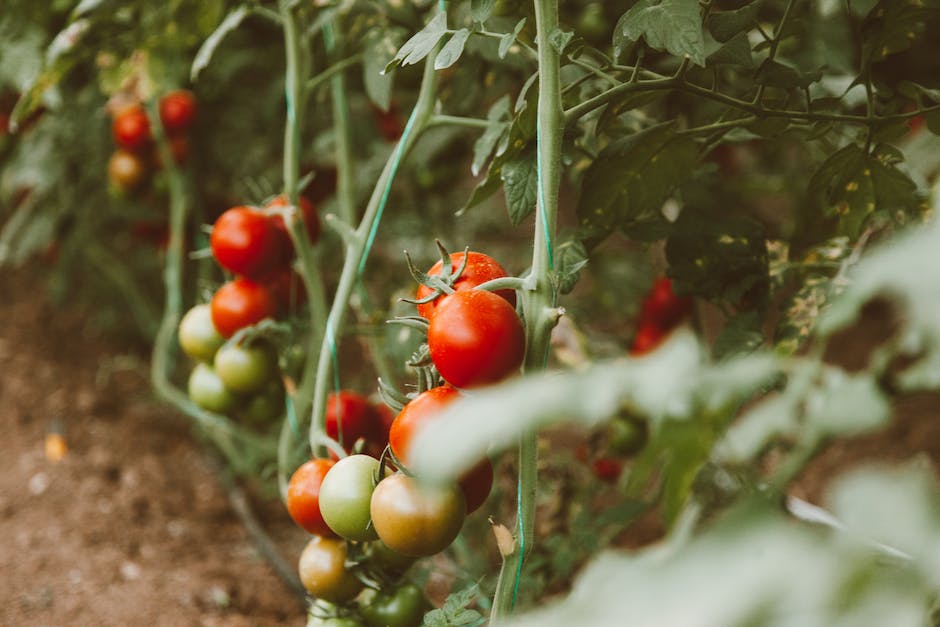Decoding Tomato Plants’ Sunlight Needs

Tomato plants, known for their nutrient-rich fruit, play a significant role in many gardens across the globe. Cultivating these plants successfully requires a solid understanding of their basic characteristics, including their lifecycle, types, and general care. Among the critical factors that influence their growth and productivity is their sunlight requirement. This illuminating journey will cover the fundamental principles of tomato horticulture before delving into the specifics of sunlight requirements and the broader aspects of caring for tomato plants.
Understanding Tomato Plant Basics
Cultivating the Perfect Tomato: Exploring the Tomato Plant’s Life Cycle and Basic Needs
When one immerses themselves in the vibrant world of tomato gardening, a fascinating green thumb challenge unravels. It all begins with appreciating the humble tomato plant’s life cycle and understanding its basic needs for optimal growth.
The life of a tomato plant typically follows a predictable four-stage life cycle. Each stage is unique, contributing to the formation of the beloved juicy, red fruit that graces many delectable dishes.
- Germination: This initial stage generally starts when the seed is sown under the soil. A perfect environment for germination is a well-drained and moist soil with temperatures ranging from 60-85 degrees Fahrenheit. With these constraints met, emergence from the soil is expected within 5-10 days.
- Vegetative Growth: As the seedling breaks through the soil, it sports two embryonic leaves. As days pass, more mature leaves unfurl. This stage is where your plant undergoes the most growth. Ensure it receives 6-8 hours of sunlight daily. Watering should be consistent. Deep, infrequent watering is recommended over shallow, frequent watering for stronger root development.
- Flowering: As the plant reaches maturity, flowers bud. These yellow flowers, or ‘blossoms’, indicate it’s time to start pollination. By shaking your plants gently, you can emulate the natural pollination process and ensure a bumper crop of tomatoes.
- Fruiting: After successful pollination, the tomato plant begins fruit production. Fruits start as tiny green spheres and ripen into beautiful, juicy tomatoes, typical within 40-60 days. Ensure the tomato plant continues getting ample water and sunlight.
Understanding and catering to the tomato plant’s basic needs significantly increases yields. It is essential to note that the tomato plant isn’t just sun-lovers; they are warmth-lovers too. While they relish receiving a full day’s sun, soil temperatures need to range within 60-85 degrees Fahrenheit as well for successful germination.
Tomato plants require well-drained soil rich in organic matter. The soil must maintain a slight acidity with a pH ranging between 6.0 and 6.8. Incorporating compost or well-rotted manure into your garden bed will ensure nutrient richness.
When watering your tomato plant, remember wet leaves are vulnerable to disease. Aim to water the base and not the foliage. An inconsistent watering schedule might lead to conditions like blossom end rot, so consistency is vital.
Nutritious feeding with regular intervals of compost tea or a balanced organic fertilizer can fuel your plant’s robust growth. As the plants grow taller, sturdy stakes or tomato cages can provide much-needed support, helping the plant to bear the weight of its succulent fruits.
In the realm of gardening, nurturing a tomato plant is a journey of patience and learning. Understand the plant’s life cycle, cater to its needs, and you’ll be rewarded with a thriving plant bearing luscious tomatoes to prove your gardening prowess!

Photo by danielcgold on Unsplash
Sunlight Requirements for Tomato Plants
The Dance of the Sun: Demystifying Sunlight Requirements for Tomato Plants
Sunlight, a fiery ball of wonder, masterfully fuels our planet’s most valued treasures: plants! The red-ripened protagonists of our tale, tomato plants, whirl in a captivating tango with the sun. But just how much of this solar energy does a tomato plant require in a day?
Tomato plants, being avid sun-bathers, thirst for a generous amount of daily sunshine. Preferably, they bask in full sunlight, somewhere between 6 to 8 hours a day. This unique botanical sun-dance fashions the beautiful, succulent red fruits that garden enthusiasts crave.
In the early stages of tomato plant development, specifically during their juvenile growth period, these green wonders require a minimum of 6 hours of sunlight. The sun’s rays charge the plant’s energy store, essential for growth and setting the foundations for future fruit production. This intense energy allows the plant to transform small seeds into vibrant green foliage, providing the much-needed runway for the tomatoes to land.
As the plants enter their middle growth phase, the optimal sunlight duration increases. Attempt to expose them to 7 to 8 hours of sunlight per day during this phase. These few extra sunrays help fortify the branches and blossoms, paving the way for strong, vigorous, and appetizing fruits.
Entering the finale of our sunlight tango, the ‘tomato plants-going-into-fruit-ripening’ stage, the plants’ daily sunlight needs stabilize at about 8 hours. The fruits, dancing under the nourishing sun, manage to convert sunlight into sugars, culminating in the sweet, juicy flavor that sets the taste buds ablaze.
However, the delicate dance with the sun does come with one caveat. Every region performs this tango slightly differently. In more scorching climates, midday sunlight can become excessively intense, causing potentially damaging effects such as sunscald. Consider providing partial shade during peak hours to ward off the sun’s fiercer moves. It’s important to respect the rhythm of nature and adapt where necessary.
Oh, and remember this sweet serenade next time you behold a tomato plant swaying under the warm sun. The daily sunlight requirements are not merely about hours and intensity. They are also about a fascinating sun-plant relationship that nurtures hundreds of seeds into succulent fruits and fills countless salad bowls worldwide. Let’s applaud this delightful dance, for it keeps our hobby—and our plates—full of life!

Caring for Tomato Plants
More than Sunshine: Nurturing Your Tomato Plants
Tending to tomato plants goes beyond just providing ample sunlight. Although solar rays are essential for their growth and fruit production, effective cultivation practices involve a bit more tender loving care. From proper spacing to pest control, achieving juicy and flavorful tomatoes requires a holistic gardening approach.
Proper Spacing
Every tomato gardener needs to embrace the art of plant spacing for abundant yields. Unlike other plants that thrive in close-quartered cohabitation, tomato plants are territorial beings. They command their own underground and aerial personal space, which shields roots from competing for water and nutrients while ensuring enough room for leaf and fruit expansion. Therefore, plant seedlings at least two feet apart. If you’re dealing with the indeterminate types (those that sprawl), step it up to three feet. Giving them room to stretch encourages healthier plants and more ample tomato production.
Staking and Pruning
Staking is a crucial practice that enables you to keep sprawling tomato plants neat and compact. The use of stakes, cages, or trellises curtails the risks of diseases since it improves air circulation and reduces leaf wetness. Pruning, on the other hand, directs energy to fruit production, as opposed to leaf growth. Aim for a single or double-stemmed plant and routinely snip off unnecessary leaves and stems.
Temperature Regulation
Tomato plants are heat-loving flora that prosper in a temperature range of 50-85 degrees Fahrenheit. Any dip or surge beyond these limits can cause bloom drop or sunscald on the fruits. For germinating seeds, a relatively higher temperature of around 75 degrees works best. Be sure to use mulch to moderate soil temperature, conserve moisture, and reduce weed growth.
Fertilization
While basking in sunlight is necessary for photosynthesis, supplementing your juicy plants with nutrients will fuel their photosynthetic engines. To thrive, they need macronutrients like Nitrogen, Phosphorus, and Potassium as well as micronutrients like Iron and Zinc. A slow-release, balanced fertilizer can keep your plants nourished over the growing season. Be careful, though – over-fertilization can do more harm than good.
Pest and Disease Control
Tomato plants are appetizing targets for pests and diseases. Common culprits include aphids, blight, and nematodes, which can be mitigated by regular inspections, use of disease-resistant varieties, practicing crop rotation, and targeted organic or chemical treatments. Healthy plants are better equipped to withstand pest and disease pressure, so always prioritize good plant health.
Pollination
Finally, bear in mind that even with the proper conditions, tomato plants might not fruit without successful pollination. Some tomato flowers self-pollinate before the blossoms even open, but others might need a gentle nudge. If you see blooms but no fruit, try shaking your plants slightly to distribute the pollen or consider using a small paintbrush to manually pollinate flowers.
Every aspect of tomato care serves a pivotal role in the success of your tomato garden. As the adage goes, the devil is in the details. By coupling sunlight with these cultivation practices, your tomatoes will thrive, providing you with a bountiful harvest that’s worth every ounce of effort you’ve put into their care.

Having a successful crop of tomatoes is the culmination of understanding various factors that contribute to their growth. Knowledge about sunlight requirements is undoubtedly significant; yet, it is only one part of a more extensive care routine. The comprehensive care of tomato plants requires the right balance of watering, suitable soil, apt temperatures, and effective pest control. When we provide our tomato plants with all these in the correct proportions, they reward us with a bountiful harvest of juicy tomatoes that serve as a reminder of nature’s gift to us.



